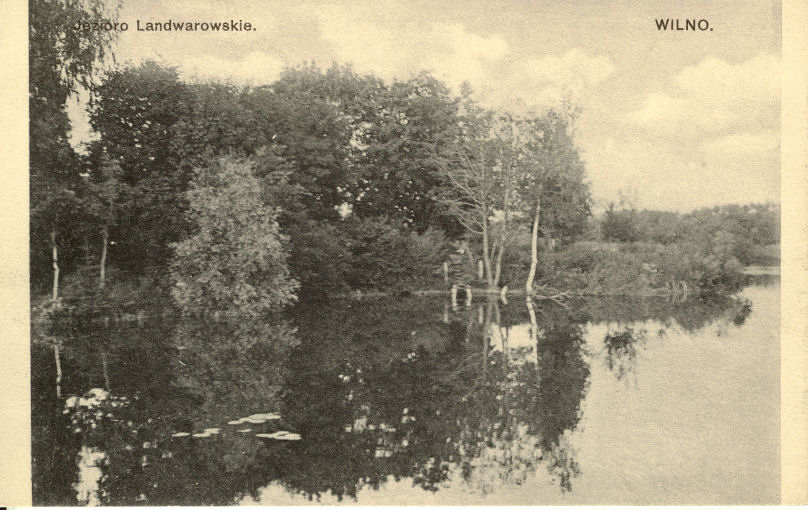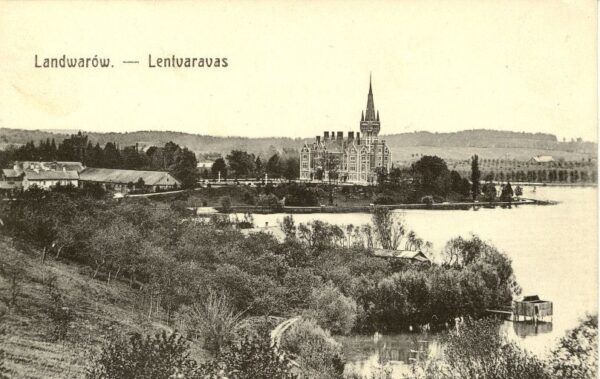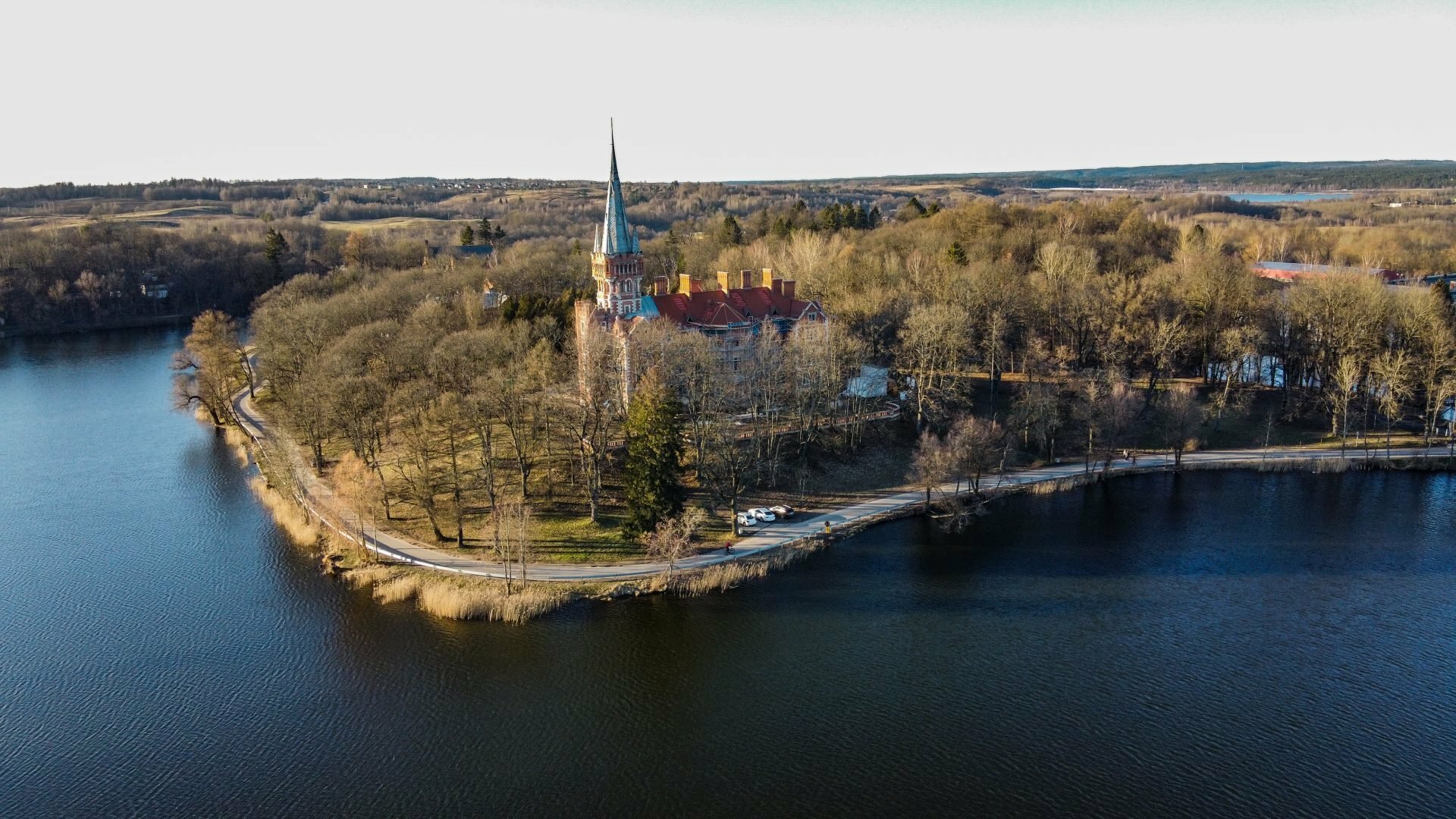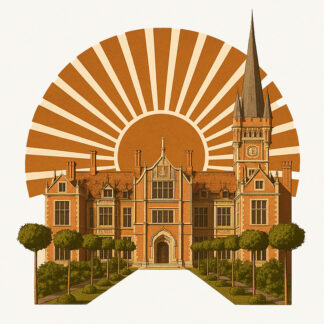You can often see a lake or a pond from a town. Lentvaris is no exception, with its pride – Lake Graužys. And lakes don’t exist without their stories: some wrapped in legends, others true.
The Transformation of Lake by the Tiškevičius Counts
When Count Juozapas Tiškevičius decided to buy the Lentvaris Manor, the lake next to it was just an ordinary glacial water body. The lake came to life only when Juozapas’s son, Count Vladislovas Tiškevičius, took over the manor and set out to fundamentally transform not only the manor’s interior and exterior but also the entire surrounding area. For this purpose, as is known, he invited the famous landscape architect Édouard François André. André created an artificial waterfall in the lake, next to which a water mill operated (its ruins remain to this day).

Italian Romance on the Shores
However, Vladislovas Tiškevičius still craved more romance: as is known, he was “infatuated” with Italian culture and passionately steered everything in that direction. Thus, it’s no coincidence that the count, inspired by Venice, introduced something unheard of in our region at the time – concerts by musicians playing on boats in the lake, which could be enjoyed while sitting in a public café built in the park.
Since the count could never have enough of the Italian style, even ferry trips across the lake at that time were highly aesthetic: a surviving photograph depicts a ferry journey from Užutrakis to Lentvaris, showing “an elegant path lit by stylish lanterns.” Incidentally, this photograph was taken by the landscape architect Édouard François André himself and preserved in his family album.
During the Tiškevičius counts’ era, the lake was still relatively small. Later, it was decided to significantly expand it: a basin was dug for this purpose, and when it became clear that the lake wouldn’t fill naturally, water was diverted from Lake Galvė. Trakai and its Lake Galvė have always been associated with one of Lithuania’s most prominent historical figures – Vytautas the Great. For this reason, Lake Graužys was even called Vytautas the Great Water Lake for a time (since the water in Lentvaris Lake came from Lake Galvė).

Reviving Lake Graužys
Currently, on the shore of Lake Graužys stands the Lentvaris Carpet Factory and what remains of the Lentvaris Manor. Can it be said that the lake’s golden age has passed? First, it cannot be denied that, like much of the cultural heritage, the Lentvaris landscape was almost completely destroyed during the wars. Later, when the Lentvaris Manor was handed over to the carpet factory, the factory’s engineer Kazys Atkočiūnas and Jonas Auštakis took on the task of restoring the park’s former glory, at least in part. They transported and polished stones, restored grottoes, pathways, and – no less importantly – the charming waterfall.
However, the lake itself seemed to fade into the background, and only last year were steps taken to restore its glory: more than 1.5 million euros were allocated from European Union funds to improve the lake’s infrastructure. The aim is to renovate the shores of Lake Graužys, creating a new city attraction, improving conditions for leisure, relaxation, and physical activity. Efforts will also be made to create conditions to attract private investments and develop the service sector.
When Count Juozapas Tiškevičius acquired the manor from the Zubov family, his main criterion was the railway line. His son Vladislovas Tiškevičius, “smitten” with Italy, elevated the lake, turning it into both an aesthetic object and an alternative transportation route. It’s likely that the lake will never again receive as much attention as it did during the Tiškevičius era, but it’s clear that Lake Graužis is alive and evolving, adapting to the times: perhaps a ferry is no longer needed, but an active shoreline is?
Sources and Literature
- Klusas, Rimantas. A Masterpiece Surrounded by Trees and a Lake. Mūsų sodyba, December 2000, p. 1.
- Lake Lentvaris. In Encyclopedia of Soviet Lithuania. Vilnius, 1986, vol. 2, p. 519.
- Narkowicz, Liliana. Zatrocze and Pogorzela of the Tiškevičius Family = Tiškevičių Užutrakis and Pogoželė. Vilnius, [2016], pp. 167–182.
- Creation of a Leisure and Recreation Zone by Lake Lentvaris (Graužis) No. 07.1.1-CPVA-R-905-01-0002. Available online: https://2014.esinvesticijos.lt/lt//finansavimas/paraiskos_ir_projektai/poilsio-ir-rekreacijos-zonos-prie-lentvario-grauzio-ezero-sukurimas




